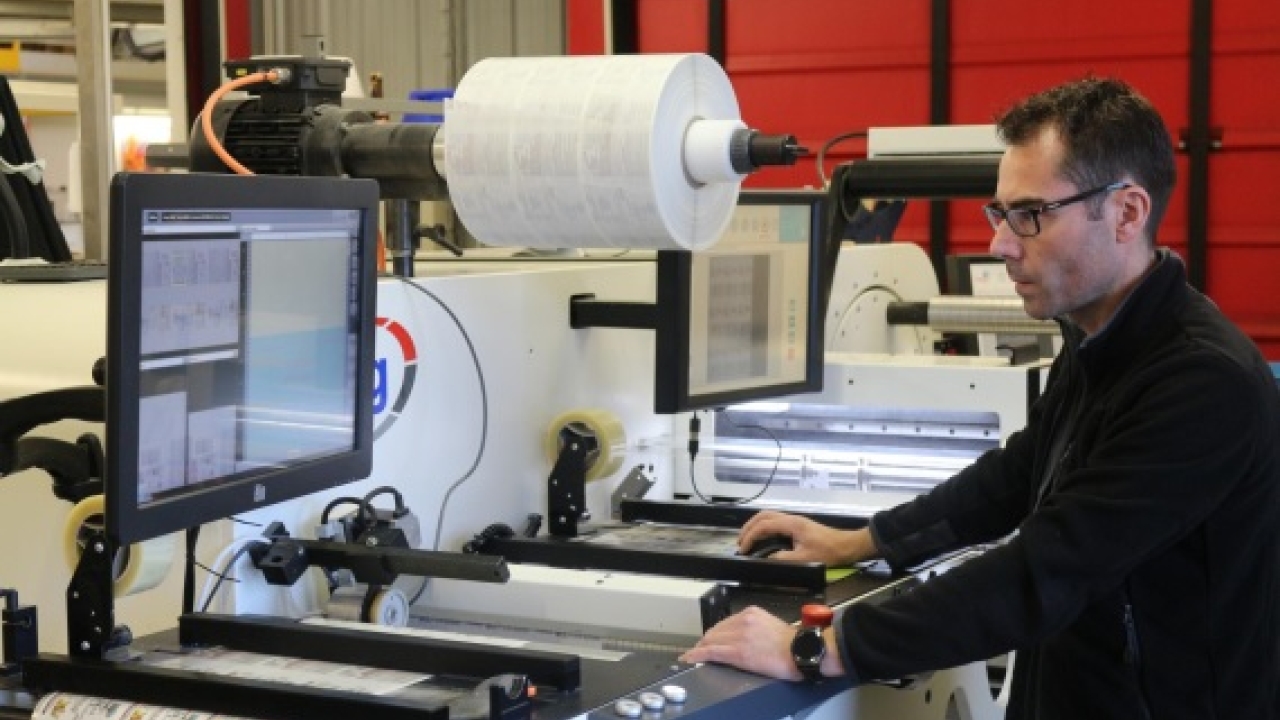5 Sept Etiquette achieves total label printing accuracy with AVT print inspection systems
French print house 5 Sept Etiquette has cut costs, increased productivity and reduced waste after investing in AVT print inspection systems, the company has claimed, with five Helios systems for its presses and finishing equipment enabling it to produce error-free labels and nearly eliminate waste. .

The Courthézon-based company manufactures rolls of adhesive labels for the food, cosmetics, wine and spirits industries. The company also works with customers in the chemical, paint, household, tooling and fertilizer sectors. 5 SEPT ETIQUETTE provides offset, flexography, screen and digital services, and holds Imprim'Vert, FSC, ISO 9001: 2015 and UNFEA QUALETIQ accreditations. With a turnover of 10.6 million Euros, the company handles six million square meters of adhesive substrate per year, and prints more than a billion labels.
5 Sept Etiquette’s business model is based on error-free production and avoiding the huge financial and environmental costs incurred by waste. However, with clients increasingly requesting changes to label orders, errors began to creep in. The resulting waste was eating into profits and undermined 5 Sept Etiquette’s commitment to sustainable production.
‘In our line of work, accuracy is everything,’ said Patrick Wack, CEO of 5 Sept Etiquette. ‘An error in the food label ingredients, or regarding the allergens or batch reference, could have major repercussions for our customers. Having to correct errors meant we were producing more labels than the customer ordered, and this waste was impacting profits.’
5 Sept Etiquette also wanted to ensure consistent print quality between each run of the same product, between the different options of the same product, and between different operators. The lack of visibility across the whole production run was another issue that 5 Sept Etiquette wanted to address. Being able to visualize the entire production run, not just sample sets, would make it easier to detect defects that appear and disappear throughout the run.
5 Sept Etiquette’s transformation began in 2009 with the integration of a centralized database (ERP) and graphic file processing tools and a camera quality-control system.
The company opted for the AVT Helios system: ‘We were impressed by its optical quality and image analysis technology, which is thinner and smarter than competitive solutions,’ said Wack. ‘Also, the AVT system could integrate with our existing IT system, which corresponded with our vision for a workflow where everything is computerized and connected.’
Initially, 5 Sept Etiquette installed two Helios II vision systems on its offset presses to control print quality. Then the company added two Helios II systems to its flexographic presses to increase productivity and connect all presses to the centralized database for reference control. At this stage, 5 Sept Etiquette controlled 80 percent of its production.
5 Sept Etiquette then equipped its finishing systems with the AVT WorkFlow Link module to connect the re-conditioners to the vision systems already installed on the presses. This connection between printing and finishing eliminated defective labels on reels. The company installed the Helios S inspection system on a press producing wine, spirits and cosmetic labels. Its advanced optical options made it much easier to visualize the gilding and embossing effects.
Last year, 5 Sept Etiquette achieved 100 percent automation across its entire production. The company can now correct defects on the press as soon as possible, reduce waste and clean the coils from non-conformities. The AVT print inspection and production workflow systems have become inseparable elements in 5 Sept Etiquette’s print architecture, enabling it to oversee and control all production elements.
In practical terms, AVT’s Helios inspection system, with the ProMIS option, is connected to the 5 Sept Etiquette graphic database, which records all technical information about the product to be printed. At the start of the print run, the system compares the label being printed with the customer-validated ready for press item, and checks the conformity of each graphic element.
Once the image is validated, it becomes the master that the whole run is inspected against. It also serves as the reference for the next run. The system registers the defective labels in an inspection report, counts the compliant labels, and stops production as soon as the correct quantity of labels is reached. The inspection report is validated by the quality manager. The system stops the finishing machine as each defect is identified by the on-press camera, so the operator can eliminate non-compliant labels.
With human intervention greatly reduced, 5 Sept Etiquette has eliminated many of the past reference errors. When it comes to evaluating hues, the fineness of texts, and the printing parameters in general, AVT’s Helios is totally reliable and has eliminated the need for operator-based optical control – and as a result led to faster production of 100 percent accurate labels.
5 Sept Etiquette’s investment in AVT products is having a clear impact: ‘For one customer, we print 400 million labels a year and the noncompliance rate is 0.02 percent, which gives us a clear competitive advantage.’
5 Sept Etiquette intends to continue integrating different tools into a more automated workflow. The next step is to open up the workflow to customers who are ready to tackle one of the most critical points in terms of quality of information management – commands and graphics files.
‘AVT’s systems have played a major role in helping us realize our vision – it’s quite likely that one day we will make it possible for some of our customers to view production video files,’ said Wack.
Stay up to date
Subscribe to the free Label News newsletter and receive the latest content every week. We'll never share your email address.

